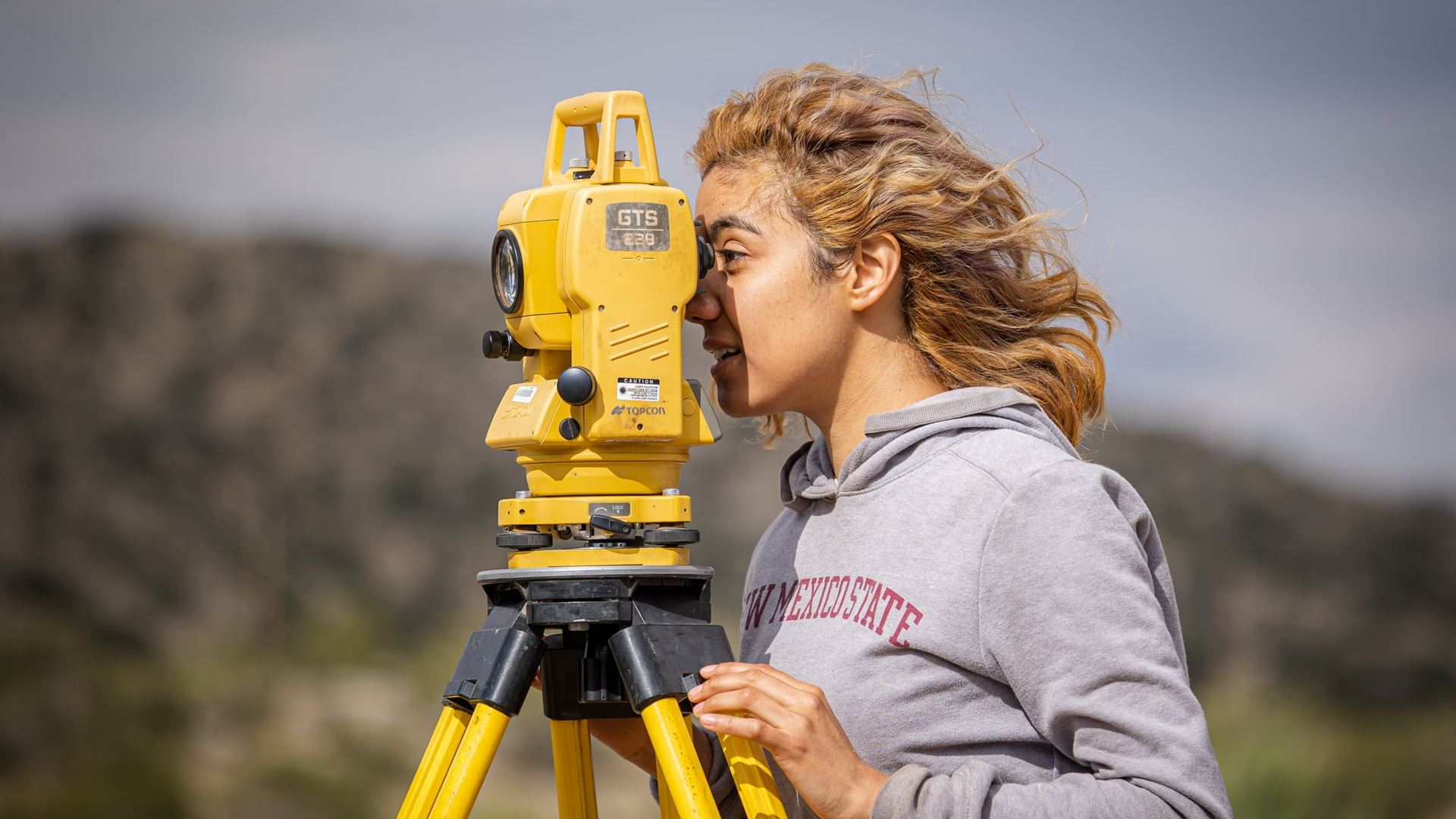For decades, New Mexico State University has hosted a fundamental six-week archaeological field school for anthropology students and enthusiasts to gain hands-on training in archaeological field methods including survey, mapping and excavation.
Despite many schools cancelling their programs this summer due to the coronavirus pandemic, the Department of Anthropology’s annual field school hosted a safe and successful experience for 16 anthropology students.
“We celebrate this achievement since relatively few universities got a summer field school off the ground,” said Rani Alexander, NMSU anthropology department head. “NMSU can do experiential learning and we are emerging from COVID-19 stronger than ever.”
Hosting field schools for anthropology students is crucial since many aspiring archaeologists need at least one field-school experience to work in the industry.
Field school directors Fumi Arakawa, director of the University Museum at NMSU and an associate professor of anthropology, and Kelly Jenks, associate professor of anthropology, worked closely with NMSU’s Department of Environmental Health, Safety and Risk Management to provide students with a safe environment to gain this important learning experience.
“We were also lucky because archaeological fieldwork, by definition, happens outdoors,” Jenks said. “A lot of the typical features of a field school already fit the CDC recommendations.”
This year’s field school was split into two separate field projects supervised by Arakawa and Jenks. Students had the chance to gain different skills and experiences with each project. The first three weeks focused on Arakawa’s project and the last three weeks focused on Jenks’ project.
During Arakawa’s project students conducted test excavations at the Twin Pines Village site located in the Gila National Forest. Arakawa has been collaborating with archaeologists at the Gila National Forest for several years to investigate sites associated with the Mimbres archaeological culture that are endangered or damaged.
“This year we decided to conduct archaeological research at Twin Pines Village because the Gila National Forest archaeologists wanted to evaluate excessive looting damage of the site since the early 1900s,” Arakawa said.
Bethany Stevens, a graduate student, had the opportunity to serve as one of the crew chiefs for both projects this summer. Stevens describes her first field school experience as exciting, working in the field five days a week involved experiences in all phases of archaeological fieldwork, including site survey, data recovery and excavation mapping.
“During Dr. Arakawa’s project our typical days involved excavation,” Stevens said. “We would set up excavation units, collect spatial data using Total Station Units, complete daily journal entries and clean and catalog any collected artifacts from the field.”
Arakawa’s team not only identified clear evidence of looting but also confirmed the existence of an extraordinary structure.
“The biggest discovery at Twin Pines was determining a large depression at the site was a ‘Great Kiva,’ which is a communal structure,” Arakawa said. “It is a ‘Great Kiva’ because of the large size of the structure as well as findings of some diagnostic features.”
The team also determined the kiva was most likely constructed and used between A.D. 550 and 650, which means it may be connected to a previous Department of Anthropology field school discovery.
“The Twin Pines Village ‘Great Kiva’ was presumably constructed and used contemporaneously with another ‘Great Kiva’ at the South Diamond Creek site, located approximately 5 miles away. The South Diamond Creek site was also excavated by the Department of Anthropology from 2016 to 2019.”
While Arakawa’s project introduced students to various excavation methods, Jenks’ project helped prepare them for archaeological survey.
Jenks supervised a survey and documentation project at the Plaza de Carnué site located on the traditional lands of the Cañón de Carnué Land Grant near Albuquerque.
“I’ve been talking with Moises Gonzales of the Cañón de Carnué Land Grant since 2017 about doing archaeological research on sites relevant to the land grant,” Jenks said.
Her team surveyed and recorded a complicated site on land recently purchased by the City of Albuquerque’s Open Space Division, which intends to manage the land cooperatively with the Cañón de Carnué Land Grant.
“The site was occupied multiple times,” Jenks said. “The most substantial features we recorded were created by a Pueblo Indian occupation during the early Spanish colonial period and a later reoccupation of the area by the original settlers of Cañón de Carnué Land Grant.”
The goal of the project was to provide Albuquerque’s Open Space Division and the land grant with better information about the site as well as recommendations regarding future research and management.
“In the field we would use site recording methods,” Stevens said. This included pedestrian surveying, in-field artifact analysis, feature recording and sketch mapping.”
Jenks and her students made a number of important observations during their time in the field, including identifying the site as the original location of the 1763 settlement of San Miguel de Loredo, the first and only official plaza settled by the original Cañón de Carnué Land Grant.
By the end of the field school, students gained skills such as mapping features at a site, identifying artifacts, ecofacts and features in archaeological contexts and conducting excavations using natural levels.
Stevens can apply what she has learned from the field school to her current internship at the Lincoln National Forest and future professional projects.
“This was an experience I will be able to reflect back on throughout both my educational and professional career.” Stevens said. “Participating in both projects and learning from Dr. Arakawa and Dr. Jenks was an absolutely wonderful and inspiring experience.”

